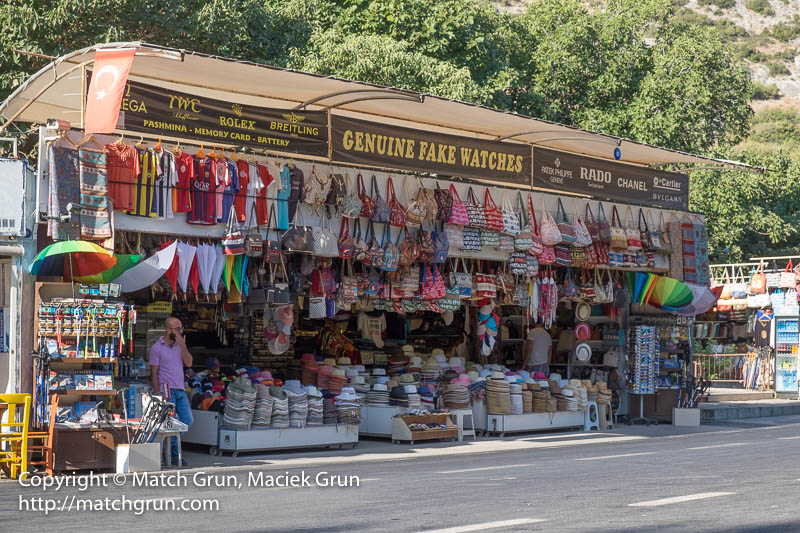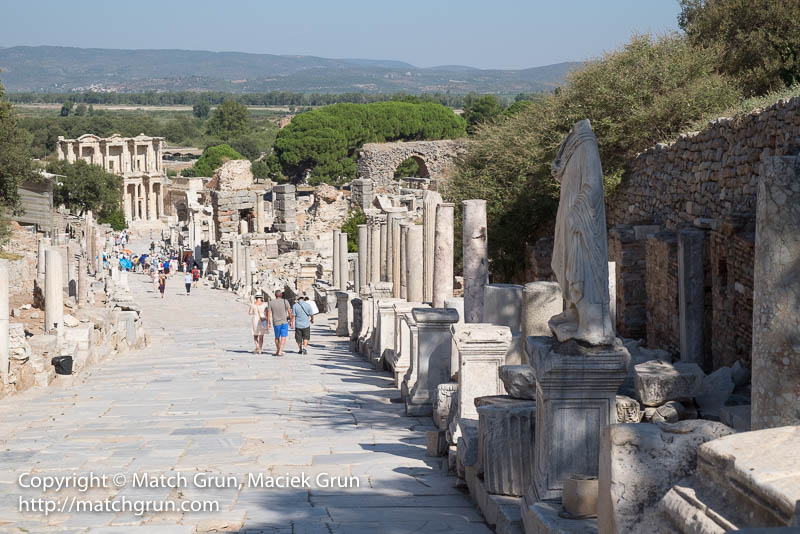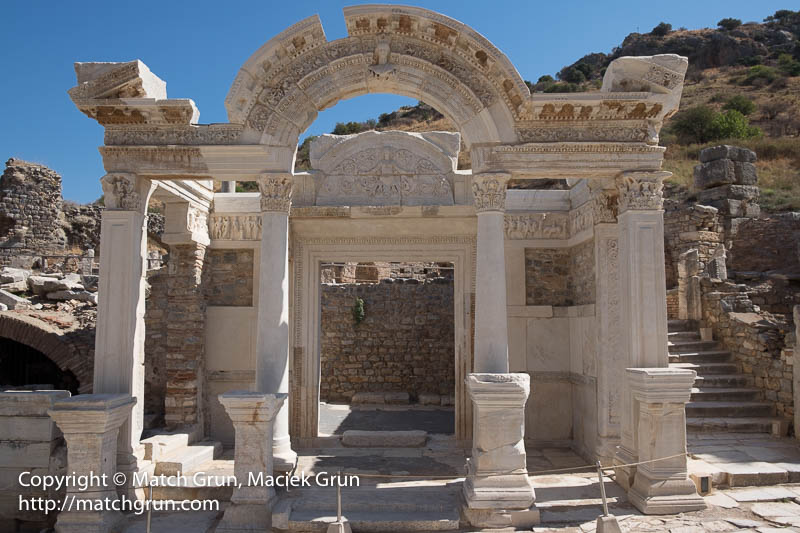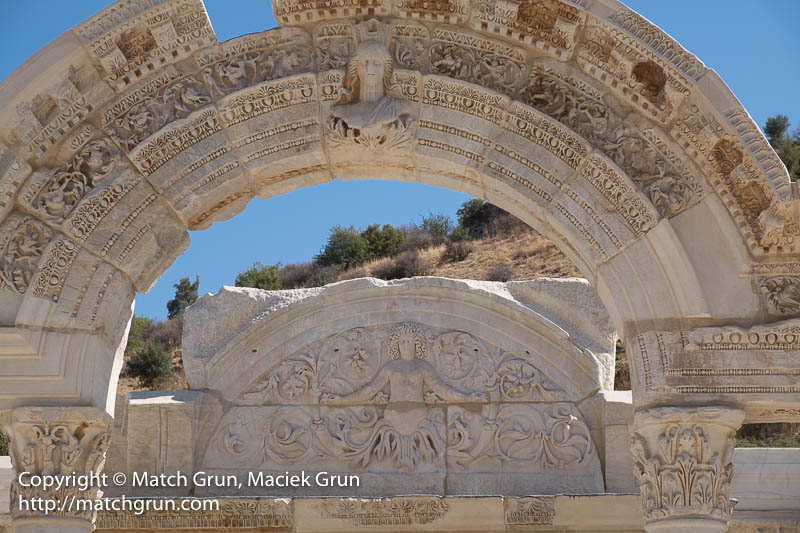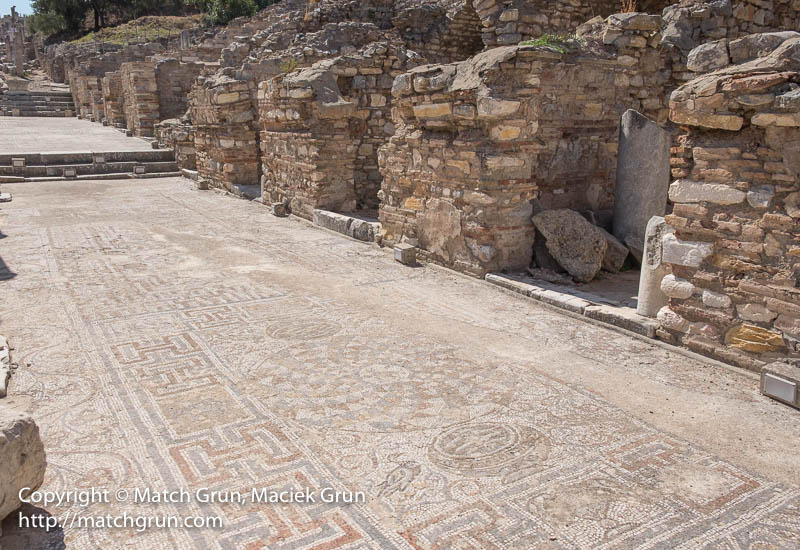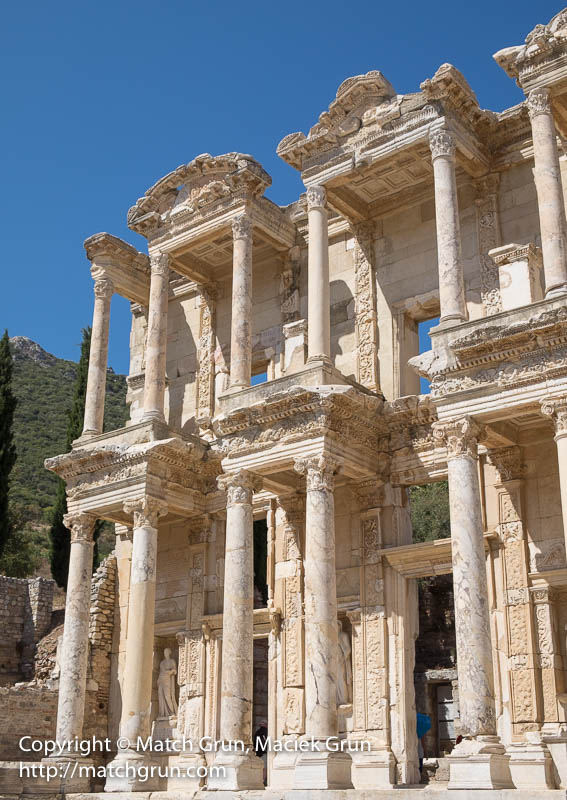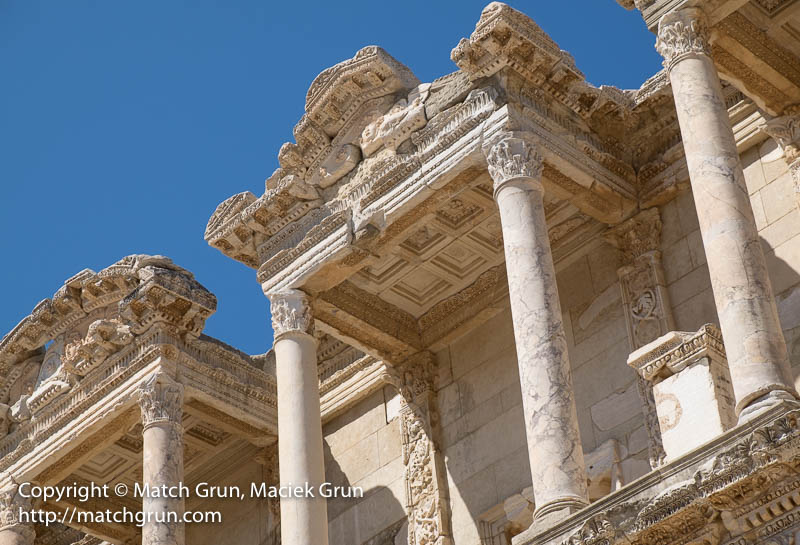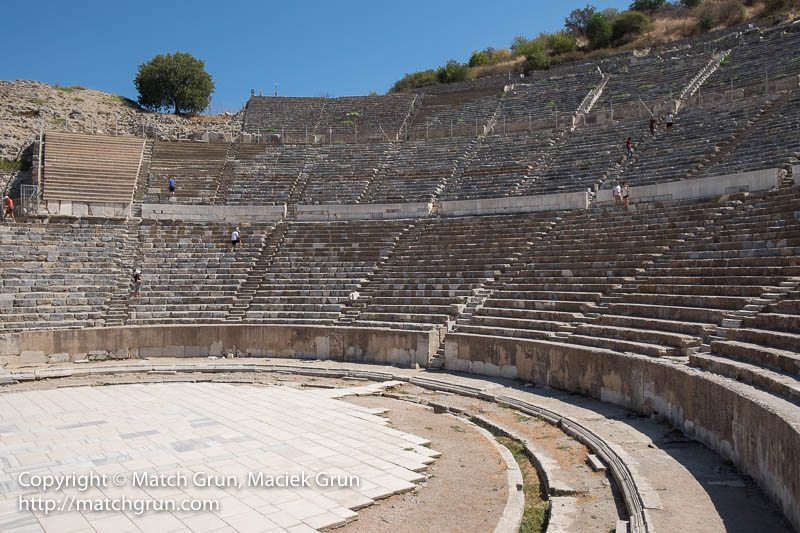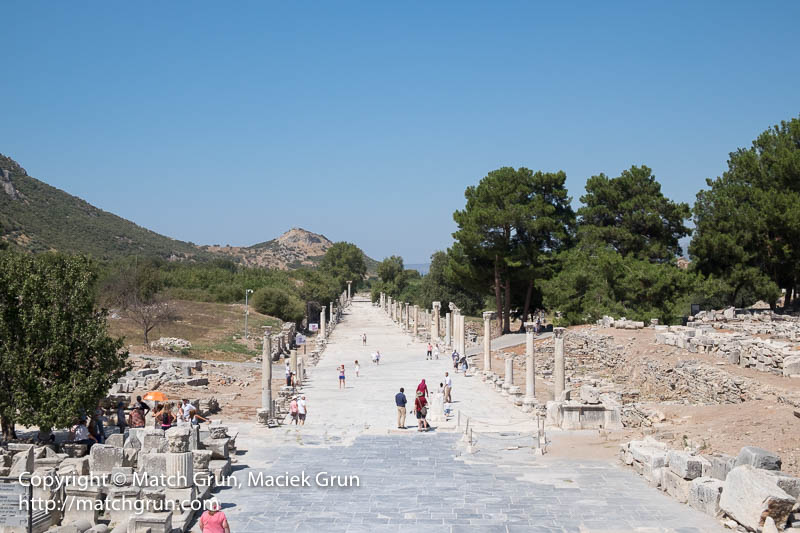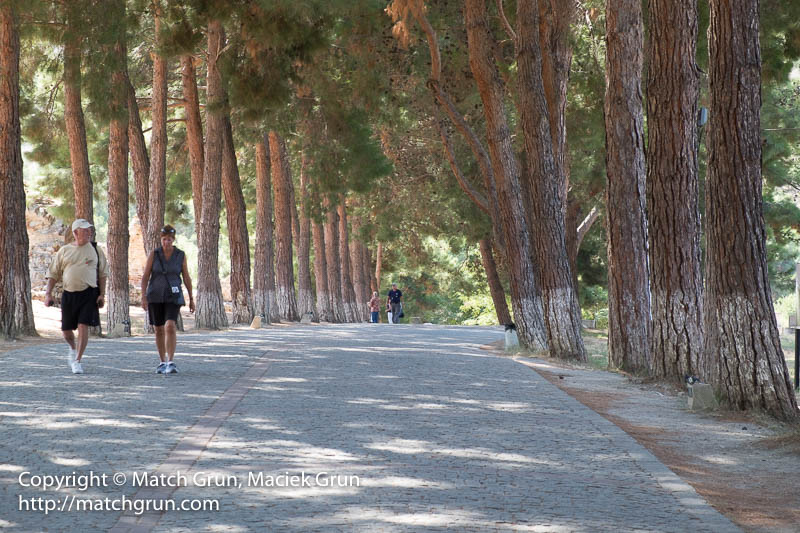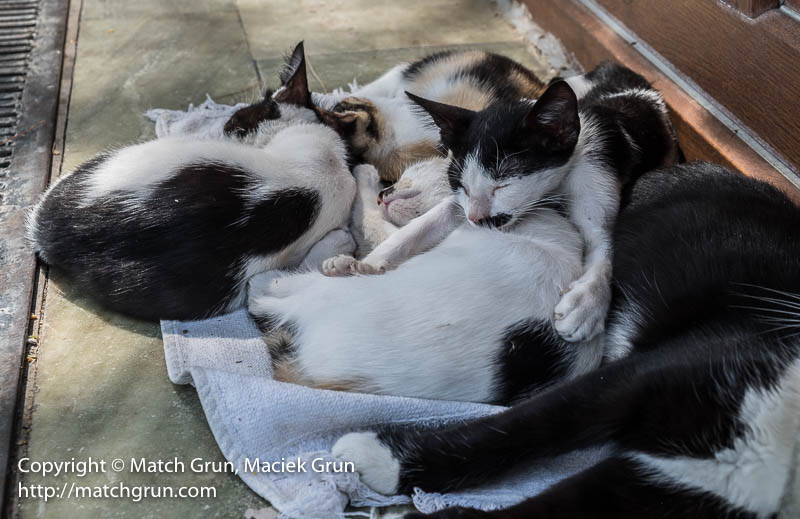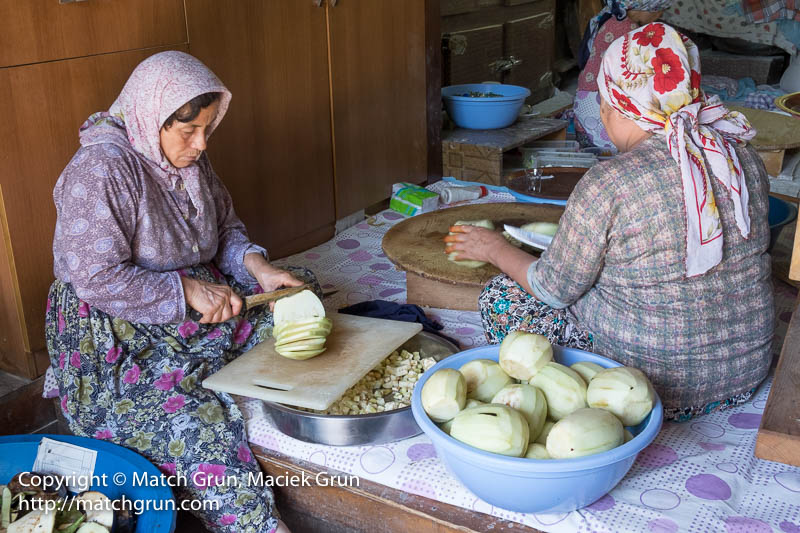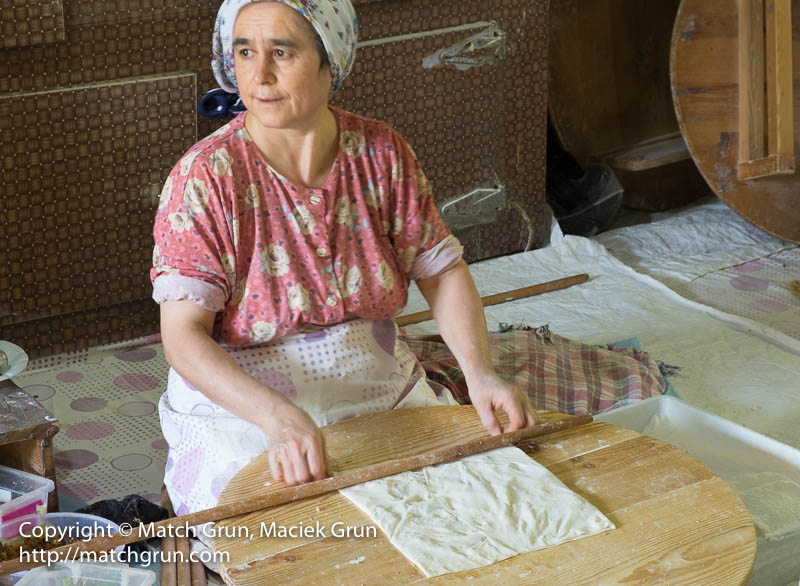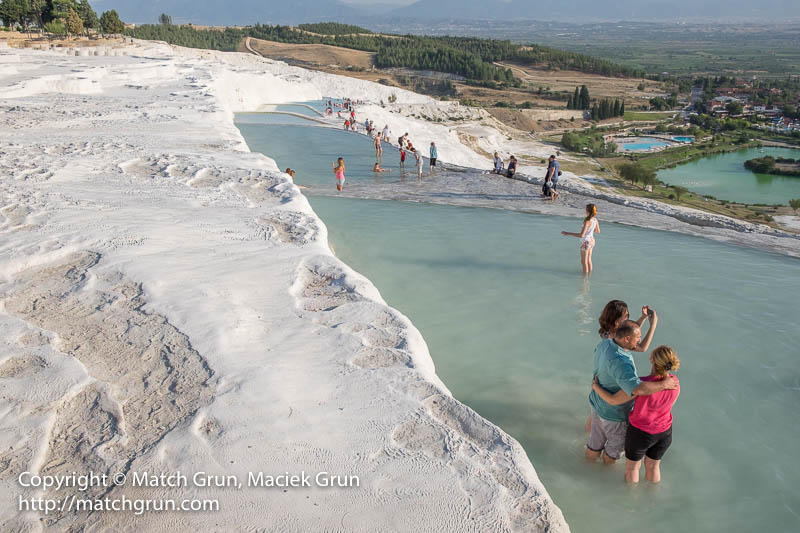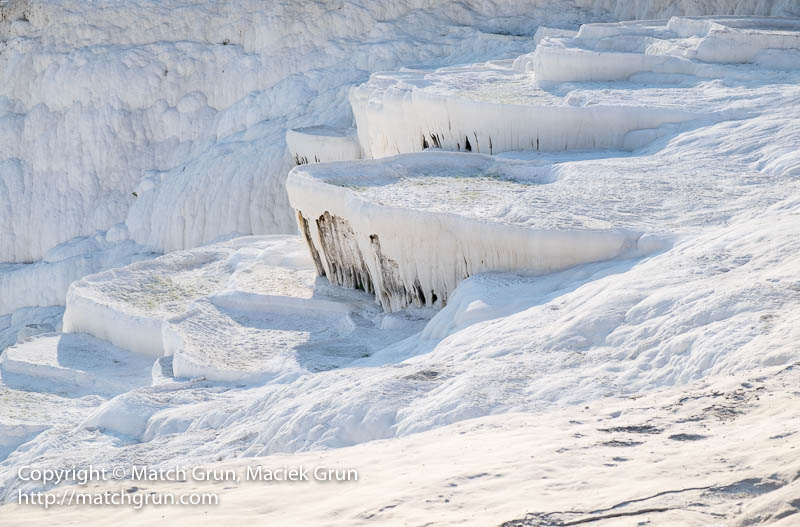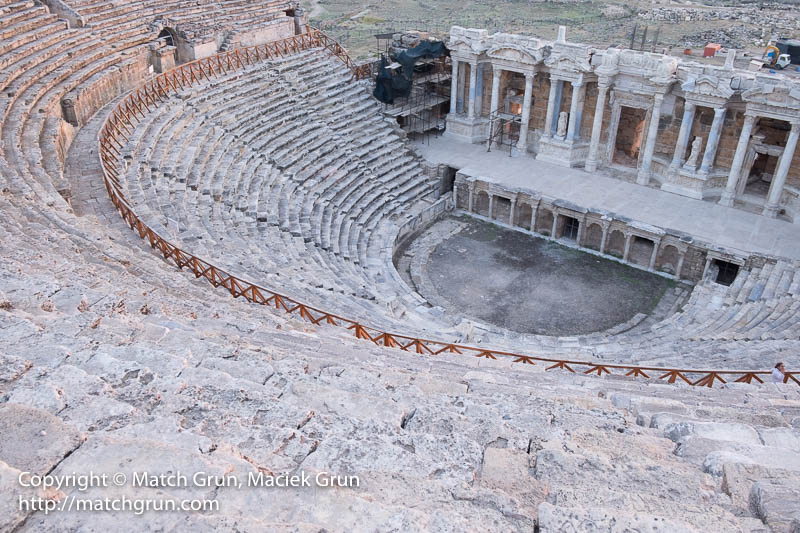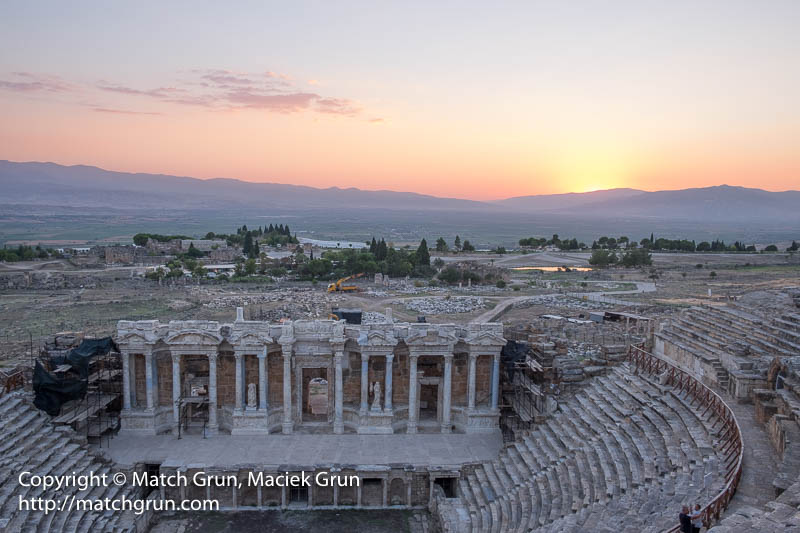After a short break, back to our tour of Turkey. After leaving the hotel, we made our way to the ancient city of Ephesus that is located just outside the town of Selçuk. We entered the city through the Upper Gate. Across the road, I was amused by a vendor selling “Genuine Fake Watches” that is captured in the following image.
The main street through Ephesus is the Curetes Way, that is tiled with marble slabs. As with many of the ancient cities in Turkey, this city was ruined by earthquakes in the 6th century. Many of the buildings have been reconstructed from the fallen remains of the buildings. The city was established by various civilizations in the past, including the Amazons and Greeks. However, most of the buildings are from Roman times.
When first established, Ephesus was close to the shore of the Aegian Sea. However, over time, the sea silted up from a variety of sources. Present day Ephesus is now 5 kms (3 miles) inland from the sea. In the following image, we look down towards the “Library of Celsus”. In the background, the shoreline was located behind, where the thin light-colored strip of ground is located.
On the right side of the street is the “Temple of Hadrian” with exquisite detail in the arches and columns.
In the image below, is the figure of Medusa, at the back of the structure.
On the left side of the street are remains of terraced houses, where some of the wealthy inhabitants lived. Outside the houses is the detailed mosaic paving that can be seen in the following image.
One of the features of the city are the latrines, where residents had reserved seats to perform their “job”. The latrines were also a place of business. The left hand was used for cleaning up, the right hand was for a handshake to seal the deal. Make sure that one doesn’t get left and right hands confused!
The Library of Celsus was constructed in the 2nd century. It was third in size after the libraries in Alexandria and Pergamon.
The image below shows some of the detail from the columns and facades of the library.
The library was reputed to contain over 10,000 scrolls that were carefully stored away from the affects of heat and climate. As with many Roman buildings, the ceilings and moulding have exquisite details that can be seen in the image below.
The Great Theater had could accommodate 25,000 people.
Across from the theater is the Harbor Street, that led down to the sea. On the left side is the site of the Lower Agora (market). This location was close to the harbor so that traders could bring their wares quickly to market.
After visiting the theater, we made our way to the exit along this avenue of trees.
Near the exit, I found the inevitable collection of cats! Here are a bunch of sleeping kittens, sleeping like only kittens can.
We stopped for a traditional pancake lunch of Gözleme close the ruins. These pancakes are very thin, like crepes, and filled with mince and vegetables. In this image, are two ladies preparing aubergines (egg plants) for the pancake filling.
This lady is preparing the pancake pastry. Pancakes are cooked on a large heated metal dish. No images here. Gözleme are delicious. Yum!
Following lunch, we boarded our tour bus and headed east to Pamukkale. Above the modern city of Pamukkale, are travertine terraces that are formed when mineral deposits from geothermal springs. This is the site of another Roman city of Heiropolis.
Mineral laden water still flows through pools down the terraces today. Visitors must remove all footwear when entering these pools to prevent damage to the mineral deposits. The mineral deposits are hard and rough to walk in bare feet. There are “pool police” standing on boardwalks alongside the pools, monitoring compliance.
The image below shows the view of the city or Pamukkale, below the terraces and in the distance.
Just before sunset, we made our way to the amphitheater for a glass of wine (or bottle), while watching the sun go down. Like Ephesus, this city was also ruined by earthquakes. However, the theater was in good condition, but the stage was reconstructed.
Here was the view from the theater, as the sun set behind the mountains.
Enjoy!

